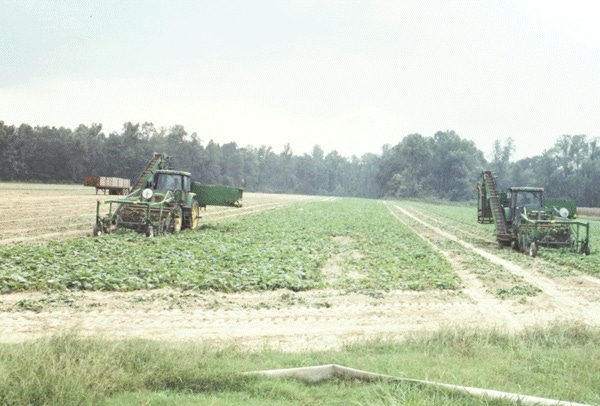February 14, 2011

Speaking at the recent Southeastern Fruit and Vegetable Growers meeting in Savannah, University of Georgia Entomologist Alton ‘Stormy’ Sparks said he had to change the title of his presentation — New Insecticides in Vegetables — because there are no new chemistries coming to the market this year.
However, there are plenty of label changes and new uses of products that vegetable growers need to know before the spring planting season, he says.
“One thing that stands out to me this year is Lorsban and diazinon use. We are not losing the labels for these products, but usage is dramatically different. As best I can determine we are now down to foliar use of these products on Brussels sprouts and sweet corn for Lorsban and honeydew melons for diazinon,” Sparks says.
Spintor is being replaced by Radiant. Radiant gives better activity on some caterpillars, its better on thrips and has a little better residual control on some insects. The change, he notes, is a corporate decision to use the active ingredient in Spintor in Radiant — the products are very similar.
In December of 2009, vegetable growers lost Furadan to EPA cancelation of tolerances. FMC, manufacturers of Furadan, is still trying to get the product back, but all indications point to growers losing the material, Sparks says.
Another loss
Endosulfan is another long-standing product that appears to be lost to lack of re-registration. It’s been used for decades, but EPA has asked for voluntary cancellation of the label due to damage to non-target organisms. Best estimates are that use of Endosulfan on most vegetables will end July 31, 2012.
“Momento is a relatively new product that was lost last year, or it lost its label and we were able to use existing stock. It has its label back for 2011. If you use Momento, remember to use a spray adjuvant to help it penetrate the plant.”
There are several formulation changes for 2011. “These changes can sneak up on you and cause some really bad problems,” Sparks warns.
Platinum changed from a 2F to a 75 SG formulation. “If you tell someone to put out Platinum at 11 ounces per acres and you mean the old 2F formulation and your applicator has the new 75 SG formulation, you are putting out 3 to 3.5 times label rate of active ingredient,” he says.
Karate and Warrior have switched names over the years, but the formulation has always been 1 EC or CS — a one-pound product. In 2011, the manufacturer is switching to Karate 2.08 CS. So, basically if you are using Karate in 2011, your product rate is cut in half. If you are using a generic product, these are still one-pound products.
“Leverage has switched from 2.7 to 3.60 rates. Essentially they kept the same amount of one active ingredient (imidacloprid), but switched to a more active isomer of pyrethroids. Use rates for Leverage are different for the two formulations,” the University of Georgia entomologist says.
Belay is a neonicotinoid insecticide that is primarily going to be used for aphids and has some activity on beetles. The jury is still out on whether it will be more active on soil borne insects. If so, it has a widely expanded label and it will be a good tool for growers, Sparks adds.
Beleaf is another kind of new material — at least another with an expanded label. It has a different mode of action from neonicotinoids. It has good activity on aphids and is a good option for growers who don’t want to use a neonicotinoid for aphid control.
“Mustang Maxx added some vegetable crops to its label. And, Rimon looks to be a real good product on sweet corn, if it gets a label for the 2011 cropping season,” Sparks says.
He stresses that growers should always look at the label before using any pesticide, but especially for insecticides, because subtle changes in the label or formulations can cause big problems, if the grower fails to use the products correctly.
About the Author(s)
You May Also Like






